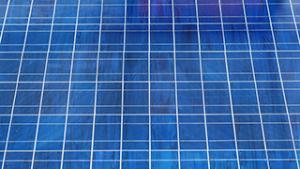 A team led by Hairen Tan at Nanjing University, China has discovered that using a tin layer in tin perovskite solar cells can boost the efficiency of this new low-cost, lightweight technology by making sure the tin stays in the right chemical form.
A team led by Hairen Tan at Nanjing University, China has discovered that using a tin layer in tin perovskite solar cells can boost the efficiency of this new low-cost, lightweight technology by making sure the tin stays in the right chemical form.
There is a huge interest in next-generation perovskite solar cell technology as a cheap and effective way of converting sunlight into the electrical energy needed to power a future free from fossil fuels. It may be possible to use this type of material as a glass coating on buildings for example.
Tin perovskite cells have been shown to be most efficient in capturing one particular part of the solar spectrum and can be paired with other perovskites in so-called ‘tandem’ cells that can then work across the whole light spectrum.
In the latest development, the researchers have found a way to stabilise the tin chemistry using a layer of tin to stop the active Sn2+ ions from oxidising to Sn4+. The new “tin-reduced precursor (TRP)” solution in a tandem cell was able achieve an impressive 24.8% efficiency, retaining 90% of its performance after 463 hours of testing in full sunlight, paving the way for making perovskite solar cells a reality.
Nature Energy paper, September 2019
